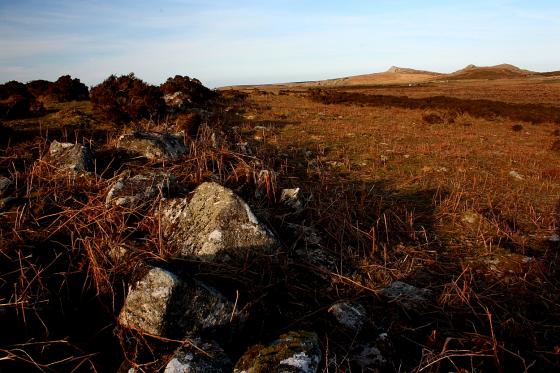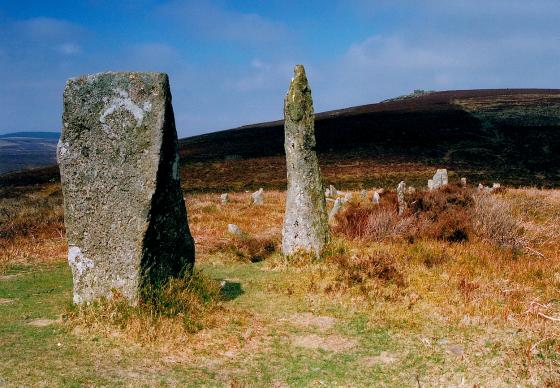Set more-or-less due west of the magnificent Eastern White Barrow, the assumption is most folks would look to combine a visit to both, right? Note, however, that the monuments stand approx three quarters of a mile apart, a not insignificant distance upon upland Dartmoor.
Having been used as the building source – not to mention foundation – of a drystone shelter for peat cutters during the 1800’s, the interior of the monument has not faired well. Neither, for that matter, has the former Petre’s Cross, the remains of which can still be seen.
Historic England has this to say:
“This monument includes a round cairn, wayside cross and shelter situated on the summit of a ridge known as Quickbeam Hill. The round cairn survives as a circular stony mound measuring up to 21m in diameter and 1.7m high. The wayside cross is positioned on the cairn, but is inverted. It measures 1.3m high and is of rectangular section with both arms broken off. It was one of four set up by Sir William Petre, who had purchased Brent Manor after the Dissolution of the Monasteries from Buckfast Abbey in 1557 and was used to mark the bounds of the Forest of Dartmoor in 1557 and 1786. The round cairn has been disturbed by the construction of a two roomed shelter within the structure of the cairn itself measuring 11.5m long by 4.7m wide and having a fireplace and chimney. This was constructed in about 1847 by workers at the Red Lake peat ties, in connection with the Naptha Works at Shipley, who re-used the cross as a chimney lintel at the same time. Following the partial destruction of the building the cross was re-erected.”

























































































































































































































































